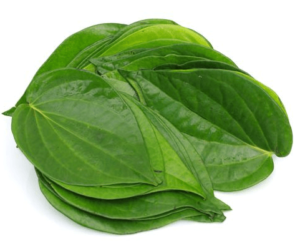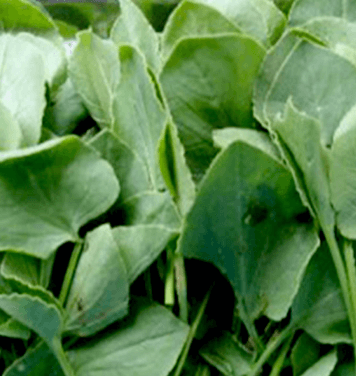In older times, paan was popular among the kings, nawabs and the rich as a symbol of their prosperity. It was also chewed after the meals so as to create a good appetite and digestion. At the same time the paan has been considered beneficial for the throat and vocal cords and regarded as a mouth freshener. This kind of paan was a combination of some prolific ingredients along with the betel leaf. This included small amounts of fennel, cardamom, catechu, betel nut, cloves, coconut and even some lime. It was to be masticated slowly after a meal.
The paan leaf, popularly known as betel in English, has been associated with some medicinal properties. In Ayurvedic texts, it is called as Tambul. The other Synonyms are Nagvallari i.e. the herb that creeps like a snake, and Saptashira i.e. the leaf contains seven distinct viens. The Latin name of betel is piper betel.
The betel is a perennial creeper found most extensively in hot and humid climates. Leaf is the part of the herb that is used for medicinal purposes.
Properties
By nature the betel leaf is light, rough and robust. It is hot potency. The taste is bitter and pungent and the after taste of paan is bitter. As per the Ayurvedic view, being hot in action, betel tends to increase the heat in the body systems. At the same time it aids in decreasing the air and phlegm body humors. Therefore, as medicine betel is used in treating the ailments related to an increase in the air and phlegm humors.
In the traditional paan, the regular ingredients were meant for supplementary healthy benefits. The addition of lime helps to subside kapha (phlegm), catechu subsides pitta (fire) and the betel leaf itself decrease vatta (air). Thus the combination of all three helps to reduce all the three aggravated humors and thus proves favorable for the body.
Yet, nowadays the paan that generally contains intoxicants like tobacco are quite harmful for the health oral hygiene. These need to be avoided as the existing ingredients even make them addictive.
Chemically, the betel leaf contains a volatile oil, which further comprises of two main components viz. phenol and terpene. Of these , phenol causes the specific odor of the leaf. Other main constituents are proteins, carbohydrates, tannin and minerals like iron, calcium , phosphorous, potassium and iodine, vitamin C,B and A are also present.
The heart shaped leaf of paan is a possessor of a number of virtuous values. It is believed to be germicidal and antiseptic in Acton. Also the betel leaf helps in reducing swelling and inflammation and relieves pain. For this purpose, the leaf is warmed and tied on the site of the abscess.
Uses
Betel is a proven appetizer. Other than this, it aids in the proper digestion and assimilation of the food. It is also mildly laxative in action and resists the intestinal worms.
The merits of betel have been emphasized in curing many respiratory maladies. Being antiseptic in nature and a destroyer of phlegm, it issued for treating common cold, cough, and inflammation of the vocal cords, bronchitis and bronchial asthma.
As a home remedy for colds and cough try mixing some juice extracted from betel leaf (5 to 10ml approx.) with freshly ground basil, mint and ginger. Add about 4 to 5 pounded pepper to the paste. This preparation can be taken half a teaspoon twice along with some honey. For throat infection, it is advised to gargle with the juice extracted from the betel leaf. It also acts as a mouthwash.
Besides, betel is believed to be an aphrodisiac and good for the heart and is used to cure some heart ailments. There are some Ayurvedic formulations in which the ingredients are mixed with the juice of betel. This adds to invigorate and rejuvenator powers of the medicine and helps to enhance the existing.


